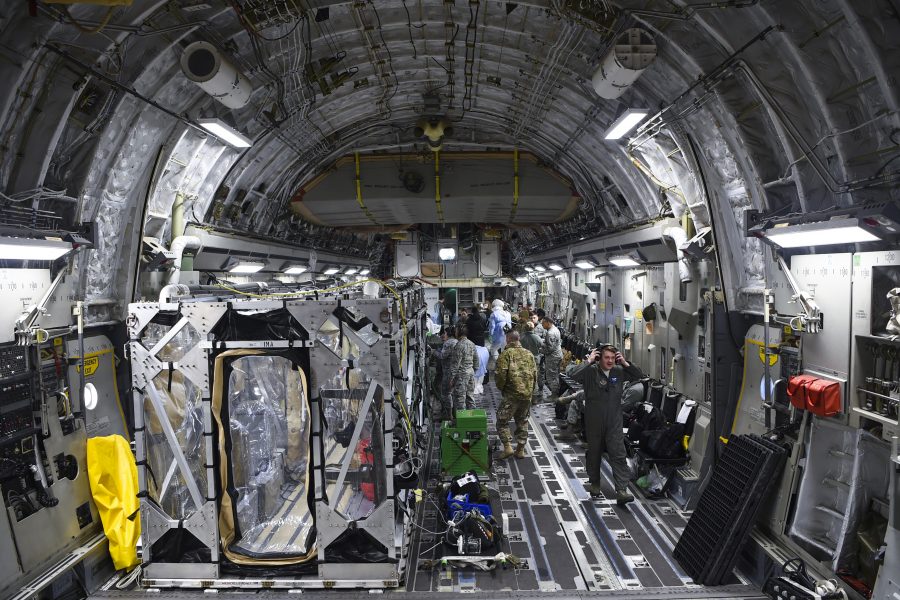The Air Force is prepping an older isolation pod system to safely move patients with the COVID-19 illness by air, and it is developing a new one that can be carried aboard C-17, C-130H, and C-130J transports, Air Force Materiel Command and the Air Force Research Laboratory said April 2.
The older system was hurriedly created for the Ebola outbreak of 2014—although never used during the crisis—and the new one is being purpose-built for the task, though with a greater patient capacity. Medical teams are being trained on the older system at Joint Base Charleston, S.C., where the new system also is being tested.
Air Force Materiel Command chief Gen. Arnold Bunch Jr. told Air Force Magazine on March 31 that testing isolation units on C-17s was deemed an “urgent operational need” and one of the top priorities for the test enterprise. Chief of Staff Gen. David Goldfein told reporters during an AFA Mitchell Institute event April 1 that the C-17 has to be modified for the mission so airflow in the plane, which moves from the back to the front of the aircraft, can be reversed for carrying infectious patients, to avoid exposing flight crews to pathogens.
The older pod is called the Transport Isolation System (TIS), and was designed to allow movement by air of infectious patients without endangering aircrews, flightline personnel, or contaminating aircraft. It’s a self-contained travel unit with an airlock that allows medical personnel to enter the unit, don protective gear, treat patients, remove and discard the protective gear, and be decontaminated before leaving the unit.
A C-17 is able to carry two TIS pods, each of which have capacity for two patients on litters or four that are ambulatory. The TIS units are watertight and have high efficiency particulate air (HEPA) filtration systems, to contain both airborne and non-airborne pathogens. Each unit has the airlock, also called an antechamber, and two isolation modules, each of which sits on a standard 463L aircraft pallet, and allows the same level of care as on any other aeromedical evacuation flight.
An Air Mobility Command spokesman said a number of the TIS units have been deployed to Ramstein AB, Germany.
Training on the TIS at JB Charleston takes three days, and instructs medical crews on how to put on and take off protective gear, how to load and unload patients from the unit and in the unit, simulated in-flight patient care, and on strict adherence to infection control practices. The training also includes a mission planning element.
The AMC spokesman said about two dozen TIS units were built, but a smaller number were kept in ready condition; the number remaining available for use was not immediately available.
The new system, called the Portable Bio-Containment Module, or PBCM, will be “purpose built” for the long-term infectious patient transport mission, the AMC spokesman said, and will have capacity for a minimum of four patients.
An urgent operational need requirement was established in March, he said, and the system will be tested at Charleston over the next few weeks. The new system is intended to be maintained in the inventory and exercised regularly. The Air Force is expected to release details of the PBCM system next week.
Air Force Materiel Command said the PBCM test team is working “in the most expeditious manner possible and with an initial flight test expected in April.”

